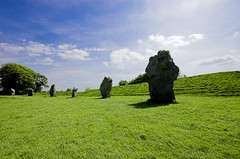Some Quick Context On the Wiccan Belief System
In 1954, a former UK government worker named Gerald Gardner proclaimed that he had received initiation into an archaic nature religion which was a survival of indigenous European faiths. The practitioners of this religion were calling themselves the New Forest Coven. Gardner launched an effort to repopularize and revive this witchcraft religion by writing and publishing a book named “Witchcraft Today,” in which he tied together the fragments of remaining tradition from the New Forest Coven.
Gardner referred to the spiritual system as “witchcraft,” and termed its practitioners “the Wica.” He explained that this latter term was introduced to him by existing initiates of the Coven, and that its use was what introduced him to the likelihood that “the Old Religion still existed.” Gardner asserted, like most current historians, that the name “Wica” came from the early English term “wicca,” which is the etymological forerunner of the contemporary term “witch.”
There is a good deal of debate about the reality of his idea that he was resurrecting an indigenous, original, goddess-based European pagan religion. A couple historians have made the case that Gardner had simply invented the traditions of the Wica, compiling features of a number of known archaic religions and from modern occult practices as needed. Regardless, most historians concur that Gardner made his assertions in good faith. It is believed that Gardner had actually been initiated into a 1900s revival of the ancient paganism that Gardner been seeking, instead of a pure survival of an ancient European spiritual tradition.
Even though he produced the craft’s beliefs in order to conserve witchcraft for his generation’s
Pages: 1 2
